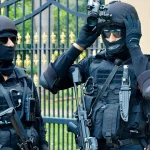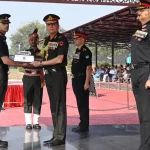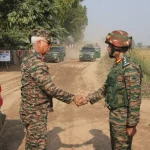The Indian Air Force (IAF) stands as a symbol of national pride and strategic capability, playing a pivotal role in ensuring the integrity and sovereignty of Indian airspace. As one of the largest air forces in the world, it continually attracts aspiring aviators who wish to serve their country. However, one of the key factors that influences the decision of young professionals to pursue a career in the IAF is the compensation package offered to its officers, particularly Flying Officers. This article delves into the details surrounding the salary structure, allowances, and perks associated with the role of a Flying Officer in the Indian Air Force, presenting a comprehensive picture for prospective candidates and interested readers alike.
Historical Context
The Indian Air Force has its roots in the Royal Indian Air Force (RIAF) during British colonial rule, formed on 8th October 1932. Initially established as a small force, its evolution over the decades has led to substantial improvements in its capabilities, technology, and personnel management. The establishment of fair and motivating compensation packages has become increasingly important for attracting and retaining talent in a competitive environment. Over time, salary structures have been modified to reflect the changed expectations of service personnel and to align them with civilian counterparts in governmental roles.
Basic Pay for Flying Officers
At the heart of the compensation package for Flying Officers lies the Basic Pay, which is determined by their rank and tenure. Newly commissioned Flying Officers receive a monthly basic pay of ₹56,100, placing them at Level 10 in the pay matrix. This includes graduates who have recently completed their training at the Air Force Academy.
Pay Scale Range
The basic pay for Flying Officers varies based on experience and rank progression. It ranges from ₹56,100 to ₹1,77,500 as they rise through the ranks. Such a pay scale reflects not only the responsibilities entrusted to officers over time but also recognizes their contribution to national security.
Allowances Offered to Flying Officers
In addition to basic pay, the Indian Air Force offers a variety of allowances that enhance the overall salary package and support officers in their service. Allowances play a crucial role in offsetting specific costs incurred due to the nature of military service.
1. Military Service Pay (MSP)
The Military Service Pay grants an additional ₹15,500 per month to all officers up to certain ranks, recognizing the unique demands and challenges associated with military service. This allowance is designed to compensate for the risks and hardships that military personnel face.
2. Dearness Allowance (DA)
The Dearness Allowance is crucial for countering inflation’s impact on salaries. For Flying Officers, it typically amounts to around 28% of their basic pay. Hence, for a newly commissioned officer with a basic pay of ₹56,100, the DA is approximately ₹15,708.
3. Flying Allowance
For officers who are part of the flying branch, the Flying Allowance offers an additional ₹25,000 per month. This allowance compensates for the specific demands and expertise required for operational flying roles.
4. Transport Allowance (TA)
The Transport Allowance varies depending on the city of posting. For officers stationed in metro cities (X-class), the TA is ₹7,200 plus DA. This is essential for officers who commute to work in urban settings where transport costs can be significant.
5. House Rent Allowance (HRA)
If government quarters are not available, officers receive a House Rent Allowance (HRA), which varies based on the city and the prevailing market rates. HRA aims to cushion the cost of housing for officers.
6. Children Education Allowance (CEA)
Understanding the educational needs of officers’ children, the Children Education Allowance (CEA) is provided, although the precise amount may vary. This support helps ease the burden of schooling expenses.
7. Other Allowances
The Indian Air Force also offers a variety of compensatory allowances based on operational demands:
- Field Area Allowance
- High Altitude Allowance
- Siachen Allowance
- Island Special Duty Allowance
These allowances are geared towards officers serving in challenging environments, providing financial recognition for their service in demanding posts.
Perks of Being a Flying Officer
The allure of a career as a Flying Officer in the Indian Air Force extends beyond competitive pay and allowances. Several perks make serving in the IAF an attractive prospect for aspiring candidates.
1. Accommodation
Flying Officers are provided with well-furnished accommodation based on their respective ranks. This arrangement eases the pressure of housing expenses and offers a comfortable living environment.
2. Insurance Cover
A significant perk is the robust insurance cover, offering officers a low-premium policy valued at ₹75 lakhs. For those serving in the flying branch, additional coverage can also be available.
3. Leave Entitlements
Flying Officers enjoy annual leave of 60 days along with 20 days of casual leave, balancing the demands of military life with personal time, crucial for their overall well-being.
4. Leave Travel Concession (LTC)
The IAF grants Leave Travel Concession (LTC) to officers and their families, promoting family time during leave and aiding in leisure travel without significant financial burden.
5. Loans and Financial Benefits
In terms of financial support, officers have access to liberal loans from organizations like the Air Force Group Insurance Society. These loans can be for purchasing homes, vehicles, and other personal needs, making financial management more manageable.
6. Welfare Benefits
Post-retirement benefits are robust, including a lifetime pension, gratuity, and comprehensive medical coverage. The Canteen Stores Department (CSD) provides they access to subsidized shopping facilities, and quality education and recreational options for children add to their well-being.
Gross Monthly Emoluments
When all the factors are combined, the gross monthly salary for a newly commissioned Flying Officer can range between ₹85,000 and ₹95,000. This includes basic pay, allowances, and a variety of compensatory incentives. Such a package makes it competitive in comparison to similar roles in government and civilian sectors.
Statistical Data and Research Insights
To provide context, let’s delve into statistical data that highlights the significance of the compensation package. According to recent studies, the average pay for officers in paramilitary forces is lower than that of their counterparts in the IAF, showcasing the need for competitive salary structures to draw skilled professionals to aviation roles. IAF’s financial measures provide not only day-to-day living support but also encourage long-term commitment through various benefits and allowances.
Comparative Analysis
When contrasting the compensation structure of Flying Officers with those in civilian aviation roles, the IAF’s package showcases a mixed landscape. While civilians may often have higher base salaries in specialty roles, the security, allowances, and perks offered by the IAF often balance the scale favorably towards service personnel, especially considering retirement benefits and job security.
Challenges and Solutions
Despite the attractive benefits, the IAF faces challenges in retaining talent, especially with opportunities blooming in the civilian aviation sector. The perception of risk, long hours, and the demanding nature of military life may deter some candidates. To combat this, the IAF can adopt enhanced recruitment campaigns, showcasing success stories of officers and the long-term benefits of military service.
Future Trends and Predictions
The future landscape of the Indian Air Force’s compensation packages is promising. As the demand for skilled aviators grows, one can expect adjustments in allowances, a review of basic pay scales, and possibly new incentives tailored towards technological advancements or operational requirements. As the atmosphere for armed forces personnel globally becomes increasingly competitive, the IAF will need to innovate continually to attract the best talent.
Conclusion
In summary, the Indian Air Force offers a compelling career path for aspiring aviators, characterized by a comprehensive compensation package that features a robust basic pay, multiple allowances, and an array of perks. These elements combine to create not just a financial incentive, but a lifelong sense of fulfillment derived from service to the nation. While challenges remain in retaining talent in a competitive market, the ongoing commitment to enhancing personnel welfare ensures the Indian Air Force remains a leading choice for young professionals seeking a meaningful career. For those contemplating a future in the skies, the rewards extend far beyond monetary considerations—they include the honor of serving one’s country and the pursuit of excellence in aviation.
For further insights, resources, and preparatory materials for aspiring Flying Officers, resources from SSBCrack and SSBCrackExams provide invaluable support. Their comprehensive range of books, online courses, and eBooks are designed to ensure you are thoroughly prepared for a successful career in the Indian Air Force.













